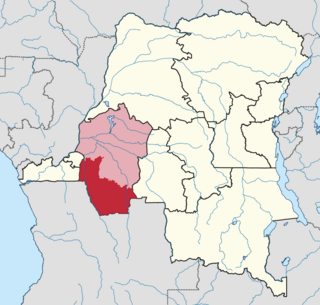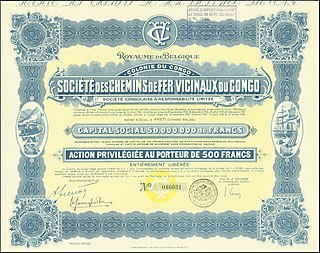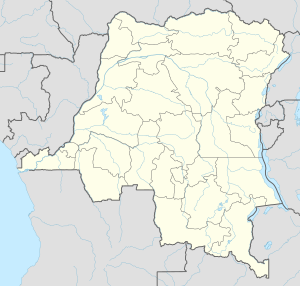
Buta is a city in the northern Democratic Republic of the Congo, lying on the Rubi River, a tributary of the Itimbiri River. It is the capital of Bas-Uele province. As of 2012, it had an estimated population of 55,313.

The Société Nationale des Chemins de Fer Zaïrois (SNCZ) was the state railway company in Zaire formed in 1974 by combining several privately owned railways. It suffered from lack of maintenance of the tracks and rolling stock, weak management, and external factors such as the Angolan Civil War and the collapse of the economy of Zaire under President Mobutu Sese Seko. Despite two projects funded by the World Bank, it had virtually ceased to function by the 1990s. It was replaced in 1995 by the short-lived private company SIZARAIL, which in turn was replaced by the present Société nationale des chemins de fer du Congo.
Likati River is a river of northern Democratic Republic of the Congo, a tributary of the Itimbiri River. It flows through Aketi Territory in Bas-Uele District.

Cataractes District was a district located in the Kongo Central province, in the Democratic Republic of the Congo. It dated back to the days of the Congo Free State and the Belgian Congo.

Chemins de fer des Uele is a 600 mm narrow-gauge line in the north east of the Democratic Republic of the Congo. It was built between 1924 and 1937 as a portage railway bypassing Congo River rapids.

Kwango District was a district of the Congo Free State, Belgian Congo and the Democratic Republic of the Congo. It went through various changes in extent. It roughly corresponded to the present provinces of Kwilu and Kwango.

Stanleyville District was a district of the Belgian Congo and Democratic Republic of the Congo. It went through various changes in extent. Between 1933 and 1963 it had roughly the same extent as the current Tshopo province.
Uele District was a district of the Congo Free State and the Belgian Congo. It roughly corresponded to the current provinces of Bas-Uélé and Haut-Uélé.
Bangala District was a district of the Congo Free State and the Belgian Congo. It went through various significant changes in extent. The eastern part very roughly corresponded to the present province of Mongala.
The Itimbiri River is a right tributary of the Congo River, which it joins above Bumba. At one time it was important as a navigable waterway for transporting good from the northeast of the country down to the Congo.

The Rubi River is a left tributary of the Itimbiri River, which forms where the Rubi joins the Likati River.
Ibembo is a village on the Itimbiri River in the Tshopo province of the Democratic Republic of the Congo.

The Société des Chemins de Fer Vicinaux du Congo, known as CVC or Vicicongo, was a railway company that operated the narrow gauge Vicicongo line and provided trucking services in the northeast Belgian Congo, and then in the Democratic Republic of the Congo between 1924 and 1974. It provided transport for agricultural goods produced in the northeast that were shipped on the Congo River to Léopoldville (Kinshasa). After independence in 1960 there were civil disturbances and the railway was poorly maintained. The company was taken over by the state in 1974. Later there were further disturbances in which the stations were destroyed and the rolling stock used as a source of metal. The track is decrepit and no longer usable.
Titulé is a village in the Bas-Uélé province of the Democratic Republic of the Congo. It was the terminus of a branch of the defunct Vicicongo line, a railway. The town is the center of a health zone and has a general referral hospital.
Libongo or Libogo is a village in the Bas-Uélé province of the Democratic Republic of the Congo. It was a stop on the defunct Vicicongo line, a railway.
Zobia is a village in the Bas-Uélé province of the Democratic Republic of the Congo. Zobia Gauche was a station on the defunct Vicicongo line, a railway.
Dulia is a village in the Bas-Uélé province of the Democratic Republic of the Congo. It was a station on the defunct Vicicongo line, a railway.
Kotili is a village in the Bas-Uélé province of the Democratic Republic of the Congo. It was a station on the defunct Vicicongo line, a railway.
Benge is a village in the Bas-Uélé province of the Democratic Republic of the Congo. It was a station on the defunct Vicicongo line, a railway.
Mawa Gare is a village in the Bas-Uélé province of the Democratic Republic of the Congo. It was a station on the defunct Vicicongo line, a railway.









